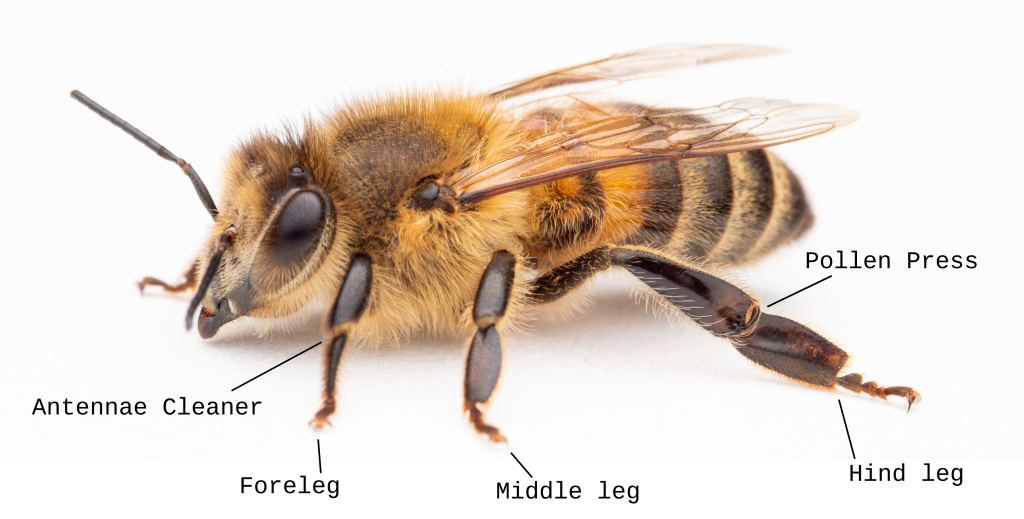When we think of honey bees, we often picture their wings, their stingers, or their role in pollination. But hidden beneath their fuzzy bodies are six remarkable legs—each ending in a foot that’s an engineering masterpiece. In this post we take a closer look at the anatomy of honey bee feet, how bees use them, and what makes them unique and different in the insect world.

🧬 Anatomy of a Honey Bee’s Foot
Each honey bee has six legs attached to the thorax: two forelegs, two midlegs, and two hind legs. The foot, or tarsus, is the final segment of the leg and is composed of several specialized parts:
- Tarsomeres: These are the five segments that make up the tarsus.
- Claws: At the tip of the foot, bees have a pair of curved claws that help them grip rough surfaces like bark or hive walls.
- Arolium: Between the claws is a sticky pad called the arolium, which allows bees to adhere to smooth surfaces like flower petals or glass.
- Brushes and Combs: The forelegs have stiff hairs and a notch used for cleaning antennae, while the hind legs feature pollen baskets (corbiculae) and brushes for collecting and transporting pollen[1][2].
🛠️ How Bees Use Their Feet
Honey bee feet are multitools that support nearly every aspect of their daily lives:
- Walking and Climbing: The claws and arolium work together to help bees navigate a variety of surfaces.
- Cleaning: Bees use their forelegs to clean their antennae by drawing them through a specialized notch and comb.
- Pollen Collection: Hind legs are equipped with brushes and a pollen press to pack pollen into the corbiculae.
- Communication: Bees use their feet to perform the waggle dance, transmitting vibrations through the comb to communicate the location of food sources [2][3].

What Makes Bee Feet Unique?
Compared to other insects, honey bee feet are uniquely adapted for their role as pollinators and social insects:
- Pollen Baskets: While some other bees have similar structures, the honey bee’s corbiculae are especially efficient for mass pollen transport.
- Antenna Cleaners: The specialized groove and fibula on the forelegs are a rare adaptation among insects.
- Electrostatic Sensing: Recent studies suggest bees may use their feet to detect electric fields around flowers, helping them identify which blooms have already been visited[4].
The honey bee’s legs help them walk, run, groom themselves, communicate, fly and form the comb of their hive. Now, how many things can you do with YOUR legs?!
References and further reading: